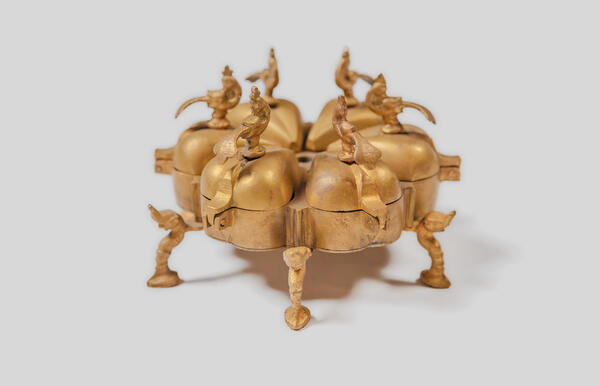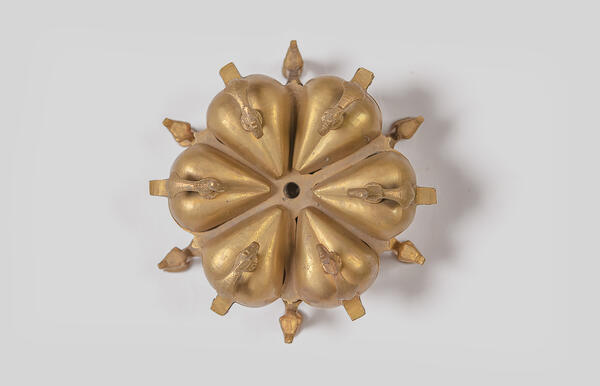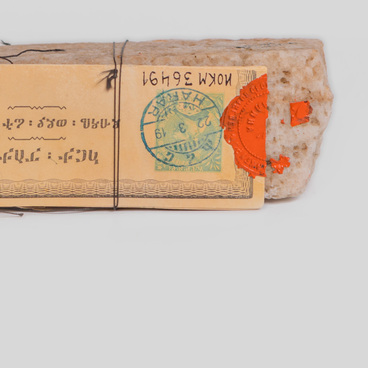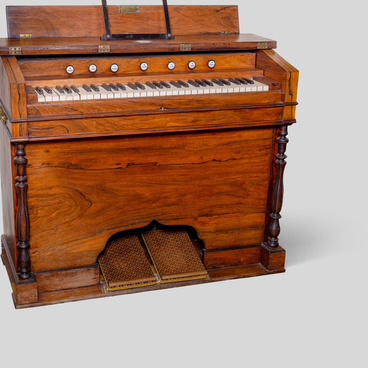The collection of the Ivanovo State Museum of Local History named after Dmitry Burylin includes a paan dan container used for storing paan (betel leaf), which is thin slices of areca palm nut mixed with spices and slaked lime, made from crushed sea-shells and wrapped in a betel leaf.
Betel, an evergreen perennial plant of the pepper family, chewed after meals to improve digestion, was very popular in the Punjab state of India. When chewed on, betel nuts produce juice which has a stimulating and even narcotic effect. The effect that betel juice has on the human body can be compared to drinking a few cups of strong coffee. Betel lovers sometimes cannot stop and chew one nut after another. To enhance the effect, additives are often put inside the betel nut.
Paan dans were made of various materials, depending on what the family could afford: metal, wood, lacquer, or silver. They were often made from perforated metal with several compartments to store paan ingredients separately. Each paan dan was designed by an artist and was therefore unique. Paan dans could be customized to suit a particular taste and usually reflected the customer’s personality.
Given the hot Indian climate,
it was always difficult to remove food from earthenware and sanitize it. That
is why metal dishware has been used very widely since ancient times. The
prohibitions imposed by folk medicine were codified by religious injunctions
concerning ritual purity and impurity, which led to ceramic vessels being used
mainly for storing grain and water by members of the high-ranking
castes. They were only used for eating by members of the lower castes.
The Indians reached the highest level of artistic metalworking even during the
Indus Valley Civilization. After centuries of being neglected, this art was
revived in the later urban civilization: metal was used to make figurines of
gods, lamps, bells and other ceremonial utensils, as well as household dishware.
In the olden times, bronze was the most popular alloy, including high-tin bronze
(bell metals), however, since the 6th–7th centuries AD, brass
has been used more often.




